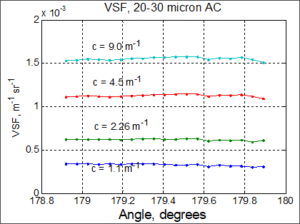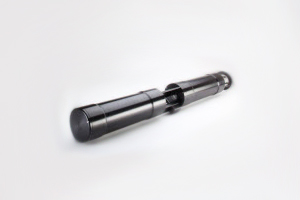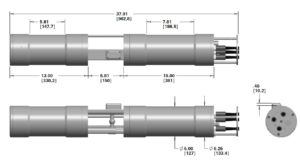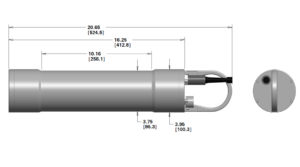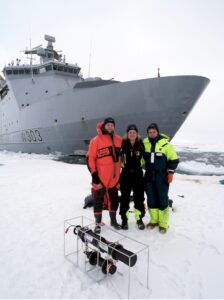Light scattering in the ocean is described by the Volume Scattering Function (VSF)—an Inherent Optical Property (IOP) that describes how light is scattered at different angles in water. For oceanographers, in situ measurements of the VSF are essential for decoding the underwater light field and improving our understanding of ocean optics.
What is the VSF?
The VSF quantifies the intensity of light scattered at an angle θ relative to the incident direction. The VSF provides detailed angular information that reveals the nature of the scattering particles. The total scattering coefficient, b, is obtained by integrating the VSF over all angles from 0 degrees to 180 degrees.
Why Measure the VSF In Situ?
In situ VSF measurements offer several advantages:
- Realistic representation of scattering behavior in natural waters, accounting for local particle populations.
- Improved radiative transfer modeling, which is crucial for interpreting underwater light fields and remote sensing data.
- Enhanced understanding of visibility and light penetration, relevant for ecological studies and underwater imaging.
For example, the shape of the VSF curve can indicate whether scattering is dominated by small phytoplankton, larger detrital aggregates, or inorganic sediments. In laser diffraction instruments, such as the LISST-200X, LISST-Glider or LISST-Deep, the VSF is inverted to yield the particle size distribution. This information is vital for characterizing water types and assessing biogeochemical processes.
Applications in Ocean Optics and Remote Sensing
VSF data are foundational for:
- Modeling light propagation in the ocean using radiative transfer equations.
- Designing and validating ocean color algorithms for satellite missions.
- Understanding underwater visibility, which affects everything from diver safety to benthic habitat mapping.
Instruments like the LISST-VSF have enabled high-resolution angular scattering measurements in marine environments from the Pacific to the North Pole. These data help refine phase functions used in remote sensing models, leading to more accurate retrievals of chlorophyll, suspended particulate matter, and CDOM.
Insights from VSF Measurements
Studies have shown that:
- Forward scattering is typically stronger in waters with large particles, while backscattering increases with smaller, more refractive particles.
- Mie theory is inadequate for modelling backscattering of irregularly shaped particles: The figure below shows an example of the VSF between 178.9 and 179.9 degrees for 20-30 um irregularly shaped particles (left), compared with the Mie theory prediction for 20-30 um spheres (right). The actual, measured VSF is flat and featureless whereas Mie theory shows structure; Mikkelsen & Agrawal (2010).
- VSF from 178.9 to 179.9 degrees of irregularly shaped particles 20-30 um size. Obtained with the prototype LISST-Back in 2008.
- VSF from 178 to 180 degrees of spherical particles 20-30 um size.
- The spectral dependence of VSF can reveal particle composition and size distribution.
- VSF measurements can be used to estimate the backscattering ratio, a key parameter in ocean color remote sensing. You can also use Sequoia’s hyperspectral backscatter instrument, the Hyper-bb to measure backscatter. Read use cases here, here and here!
Conclusion:
In situ VSF measurements are a cornerstone of ocean optics, providing the angular detail needed to understand how light interacts with the ocean. By illuminating the scattering behavior of particles, VSF data enhance our ability to model, monitor, and manage marine environments—from the surface to the seafloor. Read the Oceanic Optics Book for much more!
Get a quote for a LISST-VSF today!
- LISST-VSF Optical Path and Eyeball Detail
- Dimensions of LISST-VSF 2016 version
- LISST-VSF NiMH Battery
- LISST-VSF in excellent company on the North Pole: Håkon Sandven, Bjørnar Hallaråker Røsvik & Henrik Hellem
